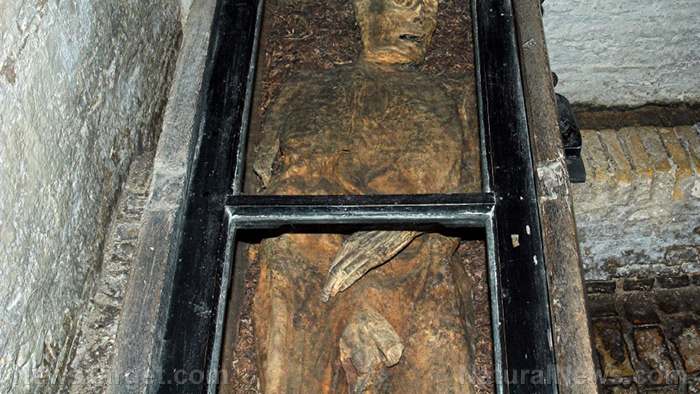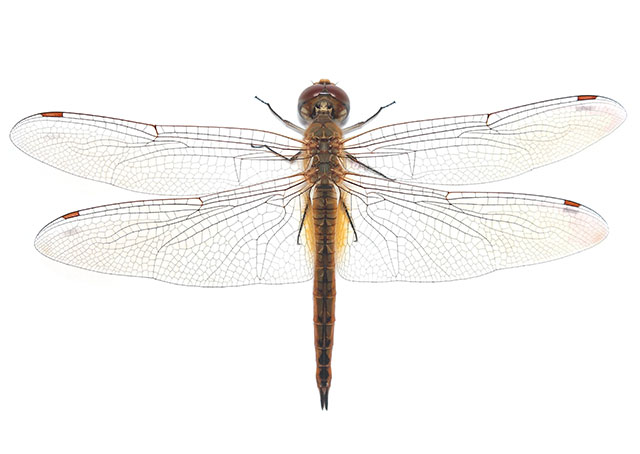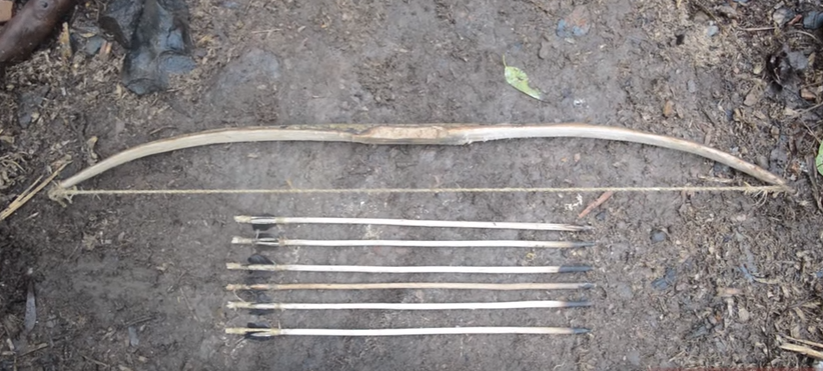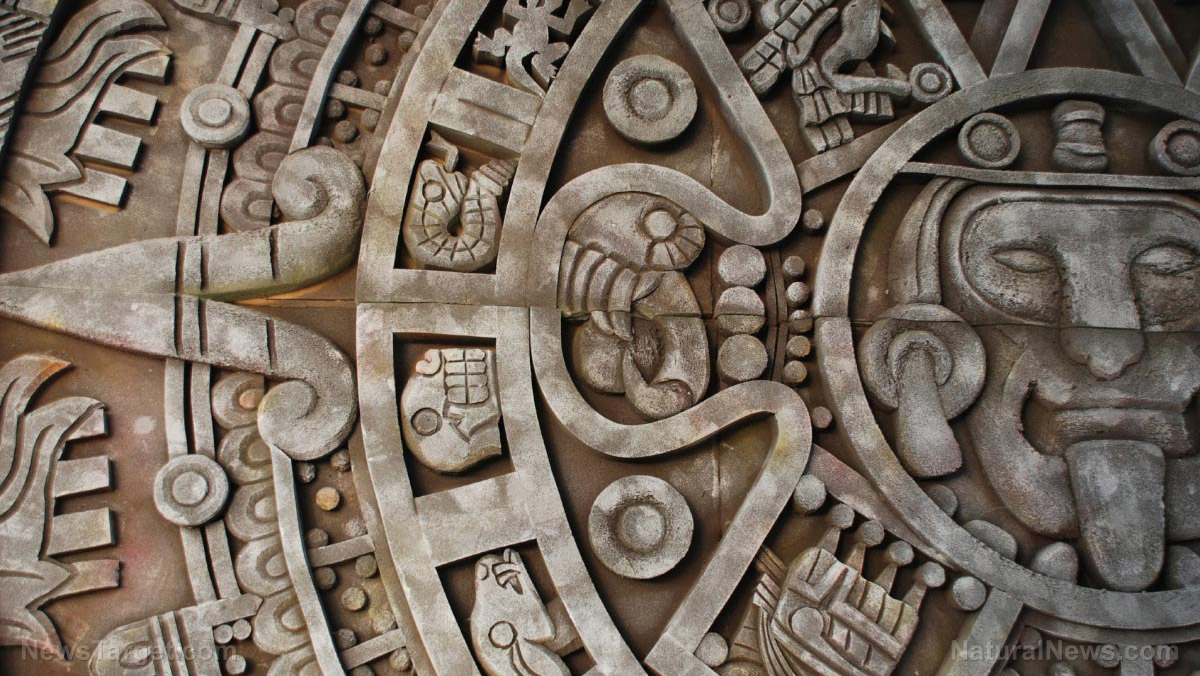Analysis of mummified kids in Ancient Egypt reveals a third of them suffered from ANEMIA
05/17/2023 / By Ramon Tomey

An analysis of mummified children from the time of Ancient Egypt revealed that a third of them suffered from anemia, or a lack of healthy red blood cells that transport oxygen across the body.
The analysis performed by a group of six researchers was published in the International Journal of Osteoarcheology. They analyzed 21 child mummies from various parts of Egypt using computerized tomography (CT) scanning, a non-destructive way to scan objects. The mummies, which dated as early as 3,000 B.C. to 400 A.D., died between the ages of one and 14.
The researchers scrutinized the mummies using full-body CT scans for anemia by looking for telltale signs of the disorder, such as abnormal growth in the mummies’ skulls and bones in the arms and legs. Of the 21 mummies analyzed, the study authors found that seven of them showed signs of anemia in the form of thickened skull bones.
In one particular example, the mummy of a one-year-old boy showed cranial signs of thalassemia. The inherited blood disorder is caused by the formation of abnormal hemoglobin, the substance which gives red blood cells their color and helps them transport oxygen throughout the body. Thalassemia can cause mild to severe anemia due to its impact on hemoglobin production.
Aside from this, the one-year-old boy also had an enlarged tongue and a condition known as “rodent facies.” Closely linked to thalassemia, rodent facies involves an abnormal growth of the cheekbones and an elongated skull. The researchers theorized that his severe anemia compounded with other difficulties likely caused his death.
What exactly caused the mummified children to develop anemia remains a mystery to modern scientists. However, the disease can be caused by a myriad of factors – including malnutrition, iron deficiency in pregnant mothers, chronic gastrointestinal issues and infections. The researchers remarked that all of these are thought to have been prevalent in Ancient Egypt, the period when the children lived.
Analysis sheds light on health problems in the ancient world
Anemia still affects children in the modern era, just like how it affected the mummified children in their lifetimes. According to the World Health Organization, the disease impacts 40 percent of children under the age of five across the world. Thirty-seven percent of pregnant women and 30 percent of women between the ages of 15 and 49 also suffer from anemia. (Related: Anemia sufferers – Improve your absorption of iron.)
The researchers noted, however, that their paper’s small sample of 21 child mummies does not represent an entire population or time period.
Dr. Sahar Saleem, a professor of radiology at Cairo University and not involved in the study, pointed out that the CT scans “produced blurry images due to low resolution that prevented interpretation” of additional signs of anemia.” The study authors themselves acknowledged this hurdle, writing that further assessment “was not feasible on the available CT examinations as the image quality was not sufficient.”
Bioarcheologist Indigo Reeve from the University of Edinburgh in Scotland, also not involved in the study, put in her two cents on the research. While anemia typically causes fatigue and weakness, she pointed out that it can also cause irregular heartbeats. Anemia can also be life-threatening depending on the type and severity, Reeve added.
Reeve also mentioned that childhood anemia can cause bone marrow to expand, leading to odd and abnormal bone growth such as the thickened skull bones the researchers found. Porous lesions can also appear on the bones and cause further medical problems, she continued.
Saleem ultimately remarked that the research “may shed light on ancient societies’ health issues, dietary inadequacies and social standards.” She added: “We think that this work may pave the way for additional research on anemia and other ancient health issues in the future.”
Visit Ancients.news for more stories about mummies from Ancient Egypt.
Watch this clip featuring dozens of mummy sarcophagi from 2,500 years ago being opened for the first time.
This video is from the ZGoldenReport channel on Brighteon.com.
More related stories:
Archaeologists discover RARE and possibly the OLDEST gold-covered Egyptian mummy.
Ancient Egyptian tomb reveals GRUESOME murals of cows being slaughtered.
Ancient Egyptian mass grave with dogs, 8-year-old kid baffles archaeologists.
CT scan reveals 49 amulets worn by 2,300-year-old “golden boy” mummy.
Sources include:
Submit a correction >>
Tagged Under:
Ancient Egypt, ancient history, ancients, anemia, artifacts, blood disorders, cranial swelling, CT scan, discoveries, Hidden History, mummies, mummified children, real history, real investigations, red blood cells, rodent facies, thalassemia
This article may contain statements that reflect the opinion of the author
RECENT NEWS & ARTICLES
COPYRIGHT © 2023 Ancients.news
All content posted on this site is protected under Free Speech. Ancients.news is not responsible for content written by contributing authors. The information on this site is provided for educational and entertainment purposes only. It is not intended as a substitute for professional advice of any kind. Ancients.news assumes no responsibility for the use or misuse of this material. All trademarks, registered trademarks and service marks mentioned on this site are the property of their respective owners.



















